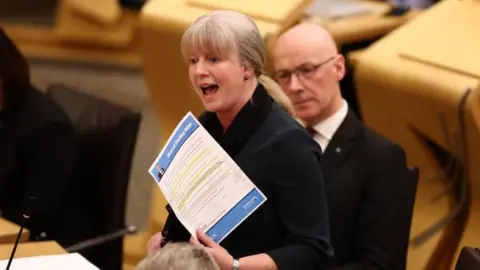 Getty Images
Getty ImagesA vow to scrap the two-child benefit cap and changes to basic and intermediate tax thresholds are among the plans for the Scottish government for the next financial year.
The announcements were made by Finance Secretary Shona Robison as she revealed her tax and spending plans for 2025/26.
Other talking points included an extra £2bn for the NHS and a £768m investment in affordable homes.
Here are five key takeaways from this year’s Scottish Budget.
1. Two-child benefits cap
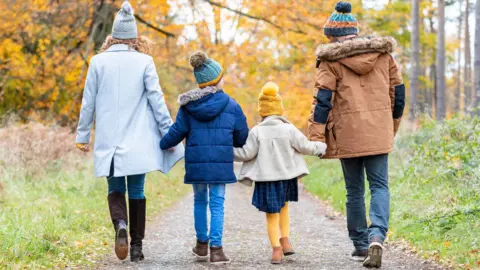 Getty Images
Getty ImagesThe biggest announcement in the budget actually isn’t part of the tax or spending plans for next year.
It was Shona Robison’s “rabbit out of the hat” moment of announcing that the Scottish government would move to scrap – or offset, or mitigate – the two-child benefits cap.
That’s a UK-wide policy, imposed by the Department of Work and Pensions on welfare payments such as universal credit and child tax credits – so it will take some time, and will need some help from the UK government.
It’s not yet clear what the mechanism will be, how it will work, or how much it will cost.
The Scottish Fiscal Commission says it was only sent the proposal last week, and that it hasn’t had time to cost it; they call it a “fiscal risk”.
But be in no doubt that this is a big challenge to Labour.
It comes days after an announcement on the winter fuel payment also designed to outflank Anas Sarwar’s party and embarrass the UK administration.
If all goes to plan then the SNP government will start sending out payments to families of the 15,000 children affected in April 2026. One month before the next Holyrood election.
Labour says it’s willing to listen to ideas, but points out that there is not a penny in the coming year’s budget to support it.
They will surely need to come up with a more substantial response before that election comes much closer.
2. Taxes
 Getty Images
Getty ImagesThere were no big changes to the devolved income tax system in this budget.
There was some tinkering with thresholds, which will have a political impact if not a big financial one.
Robison is increasing the thresholds for the basic and intermediate rates – two of the lower rungs in Scotland’s six-band ladder of taxes.
Because Chancellor Rachel Reeves has frozen those thresholds in the rest of the UK, it means Scots earning less than £30,300 will pay less tax than if they lived in England or Wales.
The difference is less than £30 a year, but it allows Robison to say that 51% of Scottish taxpayers pay less.
One bill that will almost certainly be going up is council tax. But with last year’s one-off freeze on local rates coming to an end, it will be down to your local representatives to decide.
Rather than wielding a stick by imposing any sort of cap, Robison instead sought to guilt local authorities into holding down increases, saying that “with record funding there is no reason for big increases in council tax next year”.
She says there’s an extra £1bn for local government – but it remains to be seen how much of that councillors will be free to allocate, and how much will fall into ring-fenced areas.
Every year the government says it has increased funding for councils, then councils hit back that it’s not enough, and there’s a row over exactly how much money is enough money.
We will no doubt go around in circles on that until budgets at a local and national level are finalised next year.
3. Spending priorities
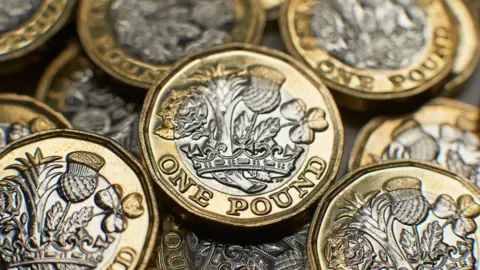 Getty Images
Getty ImagesThe budget totalled more than £63bn, and previously ubiquitous talk of tough decisions and austerity was notably absent. There was a positive tone – like Robison suddenly had some cash to splash on the government’s favourite policies.
John Swinney has made the eradication of child poverty as his top priority, and as ever there is cash in the budget for the flagship Scottish Child Payment.
The cash to mitigate the two-child cap doesn’t feature in this budget – only some money to set up that system, whatever it turns out to look like.
In total, spending on social security is up by £800m – highlighting a key feature of devolved government, in the SNP’s appetite for big state interventions and welfare safety nets.
You can include in that last week’s announcement about winter fuel payments, which are being partially reinstated from next year.
This week Mr Swinney has also (unsurprisingly) earmarked the NHS as a core priority, and as expected it has a record funding settlement – £21bn, or a third of the total budget.
That includes almost £200m to cut waiting times and cash for local hospital projects in Edinburgh, Fort William and Airdrie.
There were also billions of pounds for net zero and climate policies – including money from the ScotWind fund, a pot of cash raised by auctioning off plots of the seabed for offshore wind, which Robison had previously feared she might need to use for day-to-day funding.
And there is £768m for affordable housing, which chiefly goes to reverse a cut made under Humza Yousaf’s administration last year, but does ultimately leave spending higher and will apparently create 8,000 new homes in the coming year.
4. Growing the economy
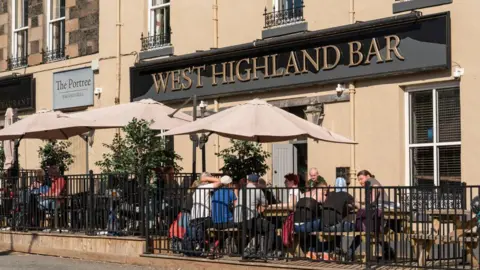 Getty Images
Getty ImagesA big focus of governments across the UK has been economic growth. Rachel Reeves has put it at the core of everything she is doing as chancellor, as Robison said a thriving economy was “an essential requirement”.
The finance secretary had been challenged to match the chancellor’s support for firms in the retail, leisure and hospitality sectors – a 40% relief on business rates.
Scotland has a slightly different system of “non-domestic rates”, but ultimately Robison said there would be a similar 40% relief for the vast majority of hospitality premises.
Retail and leisure were notably absent (although there is some support for music venues), and we will see how far this shakes out in terms of who does and doesn’t qualify for funding.
The Scottish Hospitality Group has said it is a “significantly more restricted” offer than that down south, calling it a “drop in the ocean”.
A motif of Ms Robison’s speech was name-checking her cabinet colleagues as she spoke to each of their portfolio areas.
That felt particularly notable in the case of Kate Forbes – an influential figure as the woman John Swinney brought into government in part to mend fences with business.
She has highlighted more money for town centre regeneration as well as a tripling of investment in the offshore wind supply chain, which it is said will leverage ten times that figure in private investment.
This approach of public cash opening the door to huge flows of private funds is a favourite tactic of Ms Reeves – and indeed is the core purpose of GB Energy.
That UK energy firm is set to have some company when it sets up in Aberdeen, with Ms Robison pledging to establish a hub or offshore wind in the North East.
5. Politics
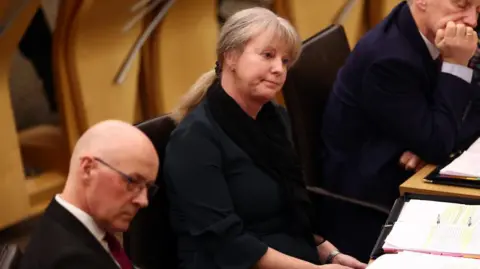 Getty Images
Getty ImagesThe SNP does not have a majority in the Scottish Parliament, and thus needs the help of other parties to pass a budget.
John Swinney has talked about wanting to reach out to opponents and run a collaborative administration.
But there is no chance of a deal with the Conservatives, who want a billion pounds of tax cuts, or Labour, who really just want an election.
That leaves the Greens and the Lib Dems as the most likely dance partners.
Robison quite deliberately nodded to the key asks of both parties. There was funding for ferries, mental health and dentistry for the Lib Dems. The Greens demanded £4.7bn for green policies – and she pledged £4.9bn.
The Greens welcomed some of the measures, but said “significant further changes” were needed. They are particularly suspicious of the sums on offer for councils.
The Lib Dems welcomed even more of Robison’s announcements, with leader Alex Cole-Hamilton reeling off a whole series of measures where he said it was right the government had listened to him.
The draft budget is really the starting point for talks, which won’t come to a head until the first votes at Holyrood in February.
But the fevered talk of snap elections which followed the collapse of the Bute House Agreement has faded. A deal with someone still feels the most likely outcome.



